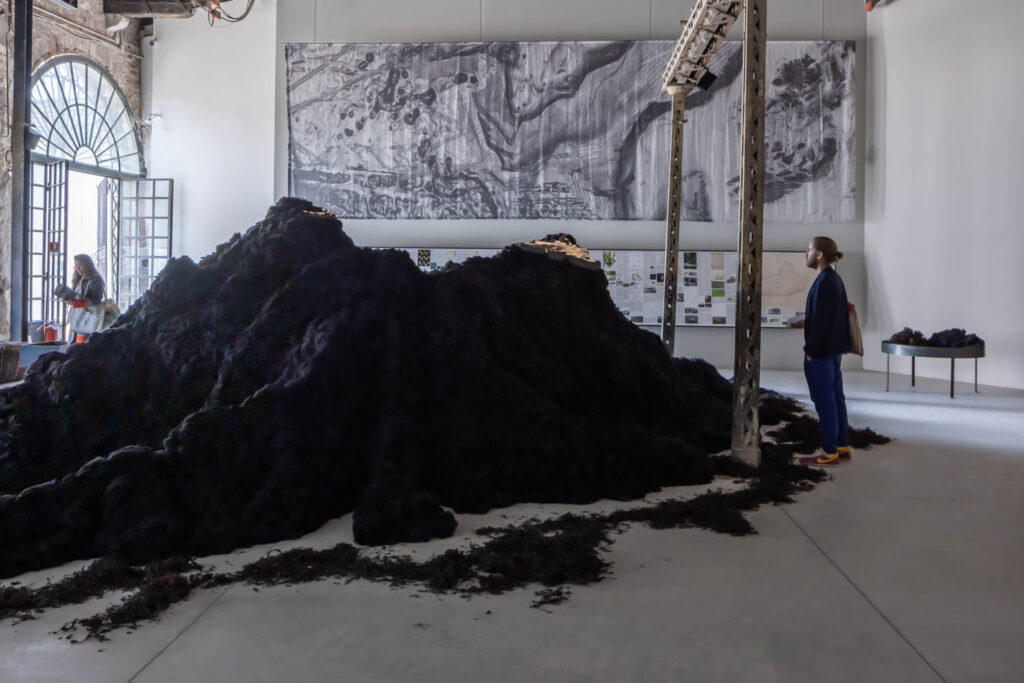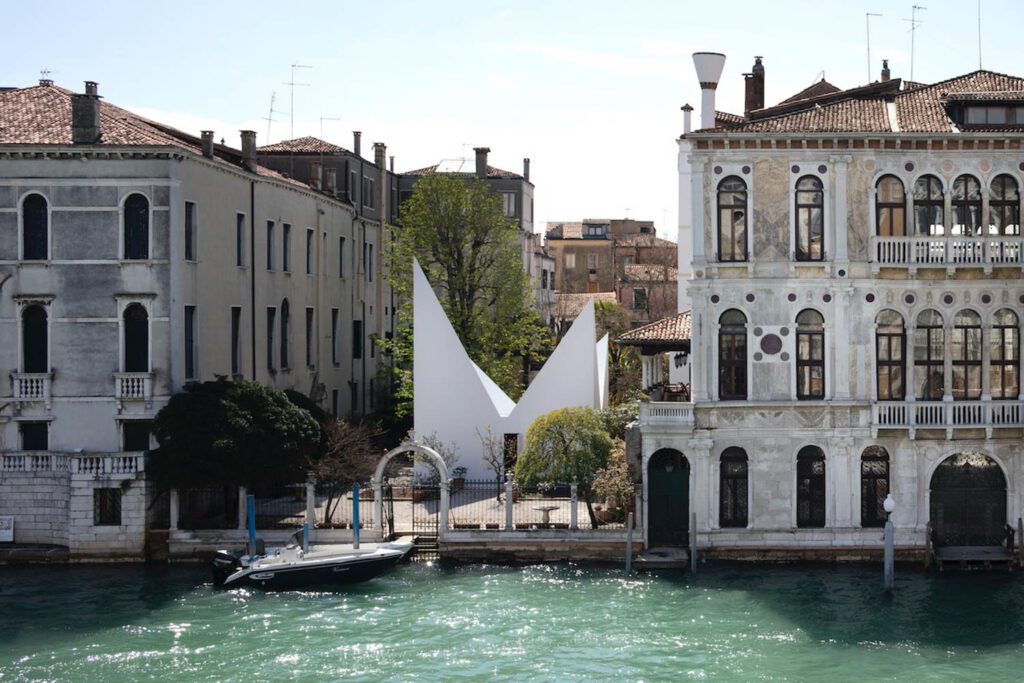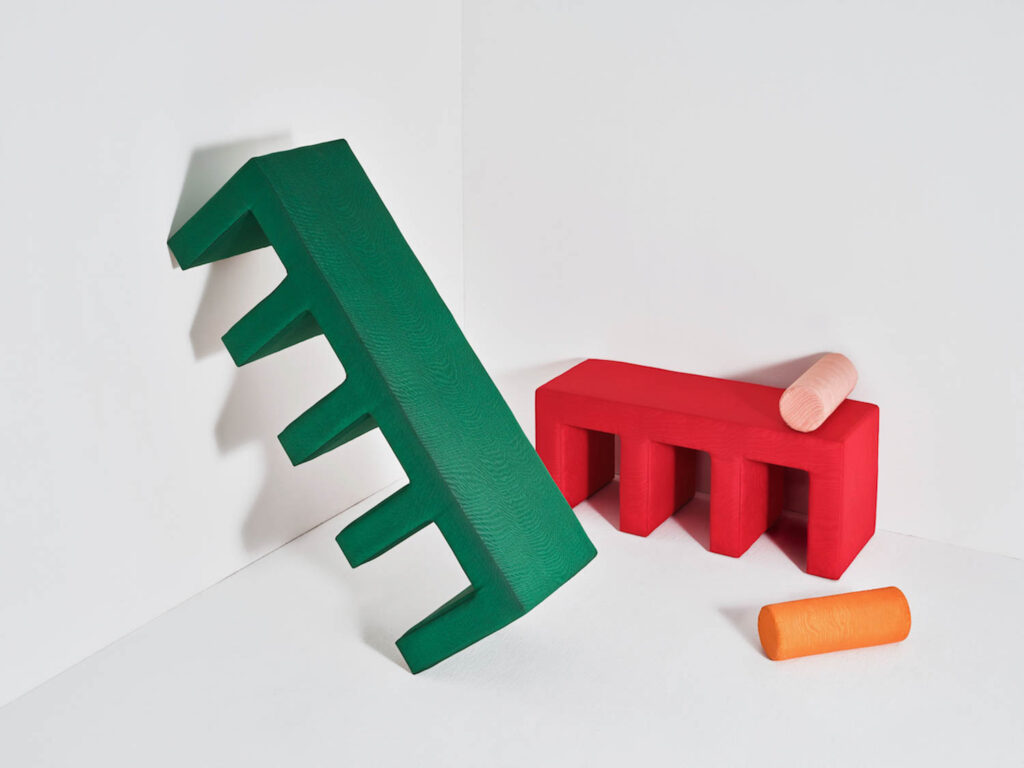
8 Biennale Installations Explore the Social Impact of Architecture
In keeping with its title, “The Laboratory of the Future,” the 18th Venice Architecture Biennale features a focus on sustainability as well as a slew of contributions by African and African diaspora practitioners—marking a shift in the event’s traditionally Eurocentric mindset. From low-key installations to immersive and experiential works to research-based ideas, the show feels, at times, inconsistent as it finds new footing. Still, the Venice Architecture Biennale offers a great deal of exploration of ideas relating to the built environment, spotlighting the impact architecture has on power structures, social systems, equity, and inclusion.


8 Thought-Provoking Installations from the 2023 Venice Architecture Biennale
Austria Pavilion – Partecipazione/Beteilingung
The Austrian pavilion explores, through a series of maps, models, photos, and text, the theme of colonization from an architectural and spatial point of view, including the role of the Biennale, which takes over much of the city. The event fills the Giardini site every year—formerly public and now walled gardens where most of the national pavilions are located—as well as the Arsenale (a historic shipyard), not to mention its city-wide events, creating a division between those attending and local residents.
The curatorial team, made up of architecture collective AKT and Viennese architect Hermann Czech, planned to take their project further and make the eastern half of their pavilion–including the courtyard—accessible to the public by connecting it to the rest of Venice via a bridge. They had buy-in from local residents and a program of events planned but the Biennale authorities, ultimately, rejected the idea. While the pavilion’s planned events are still happening in venues around the city, the bridge scaffold they were going to use stands in two forlorn parts. One in the pavilion’s courtyard overlooking Venice; the other in its now empty eastern section—a memento of what could have been.




Adjaye Associates – Kwaeε
This striking, nearly 43-foot-tall triangular structure by Ghanaian-British architect David Adjaye made out of stained black timber commands attention. Titled Kwaeε, which means forest in Twi, a dialect of the Akan language spoken in Ghana, this pavilion tracks the position of the sun throughout the day creating a forest of delightful and unpredictable shadows and light effects. Designed for public use, including debates, concerts, and more, the structure’s interiors feature tantalizing views through its patterned skin and two oculi. The installation also is modular and prefabricated so it can be reused and relocated to other sites around the world.


Mexico Pavilion – Utopian Infrastructure: The Campesino Basketball Court
The vibrant Mexican pavilion, curated by art historian and artist Mariana Botey, nods to campesino basketball courts, created to further recreation and sport in rural parts of the country at the start of the 20th century. Local communities quickly made them their own, turning the courts into multi-purpose centers of cultural life. The purple-and-yellow Venetian replica on display at the Biennale represents one such space. A life-sized 1:1 scale basketball court hosts regular ball sessions complete with chairs for viewers, a kiosk for coffee and drinks, games, and a jukebox. The utopia in the pavilion’s title refers to “the abandonment of grand narratives in favor of micro or macro processes,” says Lucina Jiménez, head of the commissioning body the National Institute of Fine Arts and Literature (Inbal). “It is in those small transformations where utopias are settled.”



Ireland – In Search of Hy-Brasil
Ireland’s atmospheric ‘quiet’ installation explores the material and ecological heritage of three remote islands: Inis Meáin, Sceilg Mhichíl, and Cliara. Peppered with native slabs of stone, the installation feature seats made out of discarded fishers’ ropes, a rich linen tapestry mapping the topography of Ireland’s maritime zone, and an island model made of sheep’s wool. Exhibition texts are written in Gaelic and Italian only as a statement about the colonization and domination of Ireland by the British. A 15th century manuscript referenced in the exhibition title speaks to this point. “Known as the Book of the O’Lees, or the Book of Hy Brasil, (because of a story associated with the book),” explains Mary Laheen, one of the pavilion’s five curators, “it is a medical treatise written in Arabic, translated into Latin by a Jewish physician in Sicily, then later translated from Latin to Irish by the hereditary physicians of the O’Flahertys. It demonstrates a different world order, one in which the lingua franca was not English.”




Olalekan Jeyifous
Nigerian-born, American artist Olalekan Jeyifous, who initially trained as an architect, created one of the most eye-catching spaces in the Biennale. The imaginary lounge of a futuristic and fictional All-Africa Protoport (AAP) is brought to life as a low-impact travel network between the ports of decolonized African states. In Jeyifous’s alternative timeline, the African continent has not been ransacked by colonial powers and the so-called African Conservation Effort (or ACE) has used indigenous knowledge to create renewable energy and green tech for decades. This AAP departure lounge can be found in the Barotse Floodplain in Zambia’s Western Province but there are others in Lagos, Mombasa, Port Said, Dar es Salaam, Durban, to mention a few. The vivid and lush painted scenes bring to mind the early 20th century Pan-African art movement, which aimed to unify African people and cultures and foster a feeling of shared identity and creativity among countries that had undergone the devastating impacts of colonialism.


Finland – Huussi – Imagining the Future History of Sanitation
Finland’s Alvar Aalto-designed pavilion declared death to the flushing toilet with an exhibition by the Dry Collective, a group of architects, designers, and artists led by project curator Arja Renell. The demise of this technology cannot come too soon, argue the curators, creating a symbolic archaeological excavation site just outside the pavilion featuring remains of a conventional toilet. At the heart of the pavilion stands a tasteful hut housing a Finnish huussi, or composting toilet, often used near remote holiday cabins. If widely adopted, composting toilets could save 30% of domestic water use, the installation’s creators assert, while by-products could be used to make more environmentally-safe fertilizers. At the end of the Biennale, the structure will be donated to a local non-profit organization, which has developed an agricultural site with allotments for it on the Venetian island of Vignole. In the meantime, the City of Helsinki is already walking the walk with two functional huussis in popular outdoor areas. Other sites for compostable toilets, mainly in outdoor recreation sites or islands in the city’s archipelago, also are in the works.




Andres Jaque (Office for Political Innovation) – Xholobeni Yards
Andrés Jaque and his Office for Political Innovation worked with a group of activists from Xholobeni in South Africa to create Xholobeni Yards, an immersive look at the widespread use of “shiny” materials in architecture through the example of Manhattan mega project Hudson Yards. Exhibition curators argue that the project’s vibrant hues are possible due to coatings made out of titanium, mined in places like Xholobeni to the detriment of the local community. They also claim the development’s stainless steel façades use chromite extracted from the Great Dyke of Zimbabwe and note that it was built over a railway—an engineering feat made possible by cobalt extracted from the Nyungu mines of Zambia. While taking in this information, visitors also encounter recorded testimonials from Xholobeni farmers and activities, as well as the sound of mining blasts.


Czech Republic – The Office for a Non-Precarious Future
The Czech Republic is currently renovating its pavilion in the Giardini so it was given a space in the Arsenale, which it filled with statistics about the precariousness of architecture from an employment point of view. Emblazoned across screens are a series of questions asked of young architects, such as: Do you work on the weekend? Do you work overtime? Do you get paid in full and on time? Can you imagine planning to have kids as an architect? Answers showcased in the pavilion are based on a research report titled “Working Conditions of Young Architects” and a survey conducted in 2020 in the country. Of the young architects surveyed in the Czech Republic, almost 50% said they work as freelancers for a single contractor and have no employment benefits; 66% said they work on weekends, and 32% said they don’t have a regular or fixed income. The exhibition also features interactive screens and easels focused on seeking solutions to create a brighter future for all.






read more
DesignWire
13 Highlights from the 2022 La Biennale di Venezia
The 2022 La Biennale di Venezia opened its doors last week. The 59th International Art Exhibition runs through November 27 in Venice.
DesignWire
10 Questions With… Gio Pastori
Milanese designer Gio Pastori creates a visual identity for Salone del Mobile 2023, with a graphic alphabet illustrating how to speak design.
DesignWire
9 Bold Color Highlights from Milan Design Week 2023
Pick your favorite from these nine colorful finds at Milan Design Week 2023 including a balloon that won’t float away and pendants that climb to the heavens.
recent stories
DesignWire
10 Questions With… Painter Daniel Rich
North Carolina and Berlin-based painter Daniel Rich shares the details behind his geometric interiors and what he sees inside architectural forms.
DesignWire
Behind the Mic: Get to Know Jeremiah Brent
What does Jeremiah Brent, interior designer and host of the Ideas of Order podcast, have to say about home? It turns out, quite a lot.
DesignWire
Design Icon and Hall of Famer Gaetano Pesce Dies at 84
Gaetano Pesce, a visionary designer, artist and sculptor who enchanted the world with his unique sense of materiality, has passed at 84.





